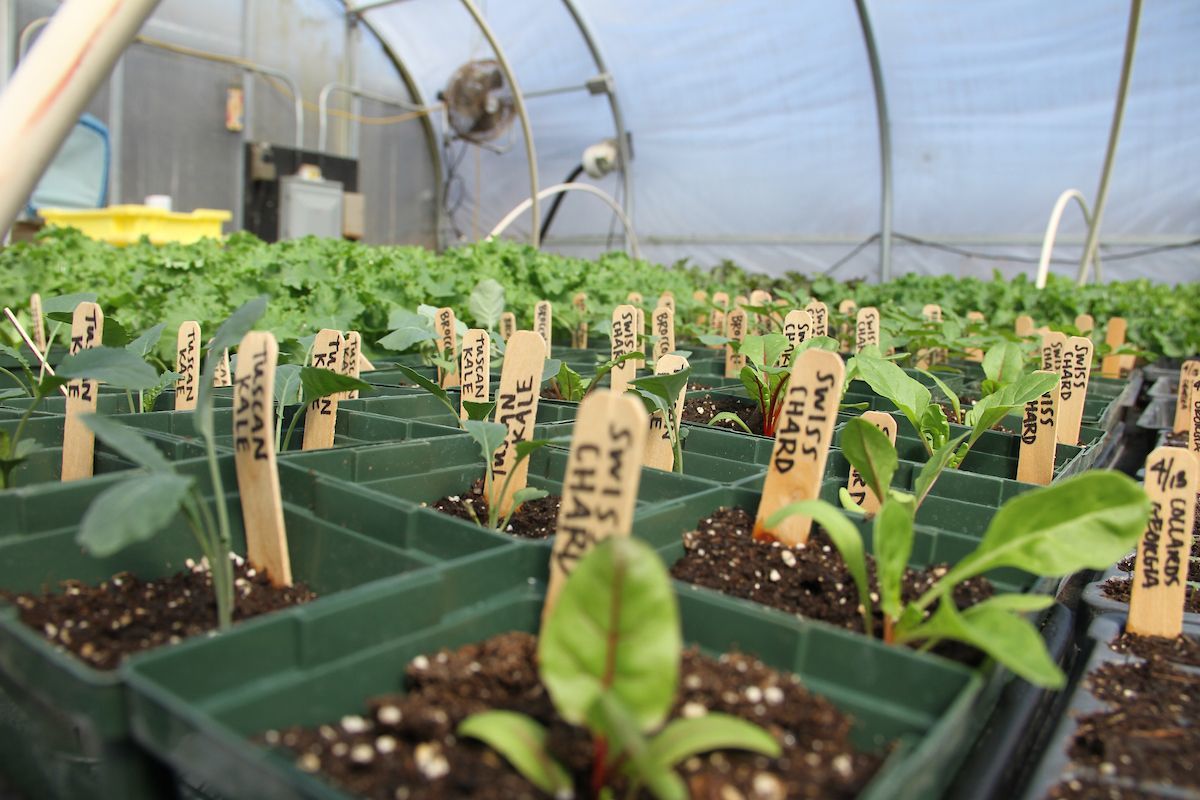
A frigid spring, constant summer rain, oppressive heat and humidity, intense thunderstorms - the weather this season has been characterized by extremes creating unique challenges for farmers that are only likely to increase as we continue to experience the effects of climate change. Different weather extremes create diverse problems for vegetable crops and I would like to offer a farmer’s perspective on how these weather events are affecting crops in the field, and how we are trying to adapt.
Excessive wetness has been the largest challenge this season, and crops at Glynwood are especially vulnerable to too much moisture because our soil does not drain well due to its high clay content. Too much water can be just as bad as too little for crops because plant roots need to breathe the oxygen found in soil air pockets to survive and will lose vitality and eventually drown if overwatered. Too much moisture, as rain or humidity, also creates the ideal environment for many plant diseases. Mildews, rots, and blights thrive on plants already weakened by roots that cannot properly respire causing roots to rot (our carrots this year), stems to decay (our peas), seeds to decompose before germination (our early beans), and destroy foliage (our kale, squashes, and tomatoes).
The heat waves we have experienced this summer also negatively impact crops in several ways. Most of the annual crops we grow for their greens, e.g. lettuce, arugula, cilantro, spinach, bok choy, prefer cooler conditions. And when under the stress of high temperatures they react as if death is imminent, and “bolt” out flowers and seeds to try and reproduce as quickly as possible, turning the flavor of their leaves very bitter (hundreds of our lettuce heads bolted in the most recent heat wave). High temperatures can be a problem for heat loving crops as well. Although tomato, eggplant, and pepper plants can thrive in the heat, their blossoms are sensitive to temperatures above 85℉ and will drop off before they can be pollinated and become fruits (I think this is why our cherry tomatoes were late this year and we currently don’t have eggplants). Cold temperatures in the form of frosts or hail also pose dangers to crops although thankfully we have yet to experience any crop loss from cold weather this season.
If the weather is extreme enough there is nothing a farmer can do to save their crops, but there are still many steps we can take to adapt and protect our crops from weather that is only somewhat extreme. New crop varieties are being bred that can better tolerate all types of weather. Physical protections in the form of high tunnels (that can survive high winds), plant covers, and shade cloths are increasingly being used. A better irrigation system, raised beds that keep crops above water, soil improvement techniques that improve drainage, and beneficial anti-fungal microbes are all strategies that I now employ to help mitigate the risks posed by the weather. And of course the sheer diversity of crops we grow at Glynwood helps ensure that some produce always survives to fill a CSA share.

